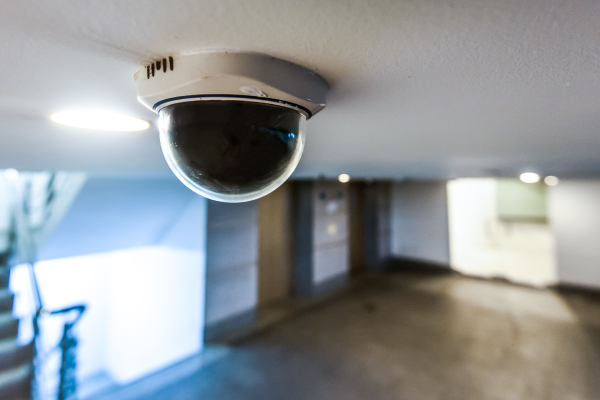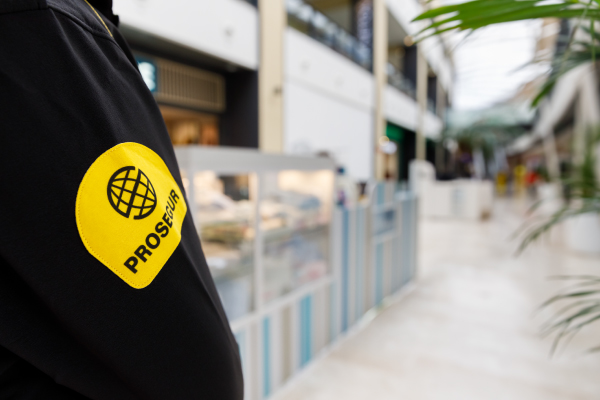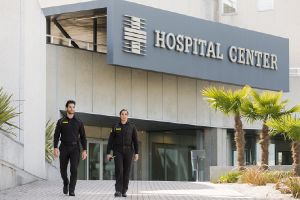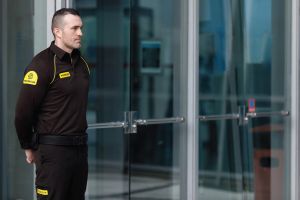How Safe Buildings Attract and Retain Tenants

Table of contents:
In today’s competitive commercial real estate (CRE) market, property owners and managers are not just leasing space. They are delivering an experience and a promise. A promise of prestige, efficiency, and most importantly, safety.
When tenants walk into a lobby, take the elevator, or leave for the evening, their sense of security shapes how they feel about the property. Security is no longer just a behind-the-scenes operation. It is part of the tenant experience and a reflection of how well a building is managed.
1. Why Security Matters as an Amenity

When people think of building amenities, they often picture high-end finishes, fitness centers, or rooftop lounges. Increasingly, security belongs on that list too.
A property that looks and feels secure signals professionalism and care. It builds trust with tenants and visitors, contributing to a positive perception of the space. Beyond safety, effective security can also improve tenant satisfaction, enhance reputation, and reduce the operational risks that cause costly disruptions.
In the Class A segment, expectations are even higher. Tenants associate quality with comfort and safety, making visible, well-executed security a defining feature of a premium experience.
2. The Amenity Touchpoints in CRE Security

Security influences the tenant experience in more ways than most people realize. From the front desk to the loading dock, each interaction contributes to the overall sense of safety and professionalism.
Lobby and Front-of-House Experience
Security personnel are often the first point of contact in a building. When they combine vigilance with customer service, they help create a welcoming and trustworthy environment. A professional presence at the front desk can enhance both safety and the building’s image.
Access and Visitor Management
Smart access control systems and visitor management tools provide convenience while maintaining protection. These solutions create a smooth flow for tenants and guests without compromising safety, which is essential for a positive daily experience.
Perimeter and Back-of-House Protection
Vandalism, theft, and unauthorized access remain ongoing risks for commercial properties. Regular patrols and visible monitoring discourage unwanted activity and demonstrate a commitment to maintaining a secure environment.
Technology and Oversight
Modern security programs rely on a mix of people and technology. Remote monitoring, video analytics, and real-time communication tools can strengthen on-site teams, enabling faster responses and better coordination.
Compliance and Accountability
Consistent documentation and adherence to regulatory standards not only protect the property but also provide transparency. This builds confidence among tenants and ownership alike.
3. How Security as an Amenity Delivers ROI

When security is treated as an amenity rather than an expense, it begins to generate measurable returns.
- Tenant Retention and Attraction: A secure and professional environment encourages tenants to renew leases and attracts high-quality occupants.
- Reduced Downtime: Proactive security helps prevent incidents that can interrupt business operations.
- Enhanced Reputation: A safe building reflects well on property management and ownership.
- Insurance and Liability Benefits: Strong security measures may contribute to lower risk profiles and insurance savings.
- Operational Efficiency: Integrating personnel and technology can streamline processes and reduce redundancy.
Viewed this way, security becomes an investment in stability, reputation, and long-term asset performance.
4. What a Tenant-Focused Security Program Looks Like
A thoughtful approach to security considers both risk and experience. The goal is to create an environment that feels safe, professional, and welcoming.
1. Assess the Environment
Start by understanding the property’s unique risks and daily activity patterns.
2. Set Clear Standards
Define what professionalism, visibility, and responsiveness mean for the property and its tenants.
3. Design for Experience
Consider how security integrates with the flow of the building—from entryways and elevators to loading areas and shared spaces.
4. Train for Both Safety and Service
Security personnel should be ambassadors for the property. Their demeanor, communication, and attentiveness directly influence how tenants perceive the environment.
5. Use Data and Technology Wisely
Modern tools, from visitor tracking to remote monitoring, enhance awareness and transparency without sacrificing convenience.
6. Communicate Value
Regular updates, visible improvements, and open communication with tenants reinforce confidence in the property’s management.
7. Evolve with the Market
Tenant expectations and technology evolve. Continual review and adaptation help maintain both safety and satisfaction.
5. The Bottom Line
Security is no longer just a background function. It is an integral part of the tenant experience and a key factor in property success.
When viewed as an amenity, security contributes to trust, satisfaction, and the overall value of a building. The most successful commercial properties are those where safety and service work hand in hand, creating spaces where tenants feel both protected and valued.
Ready to turn security into a competitive advantage for your commercial property? Discover how Prosegur delivers tailored security for the commercial real estate sector. Explore our Commercial Real Estate Security Services
Stay updated with the latest security trends and analyses by following Prosegur's blog.
-
Safety Compliance That Doesn't Annoy Construction Crews
December 4, 2025
-
How to Make Security a Partner in the Patient Experience
November 11, 2025
-
How Safe Buildings Attract and Retain Tenants
November 4, 2025


